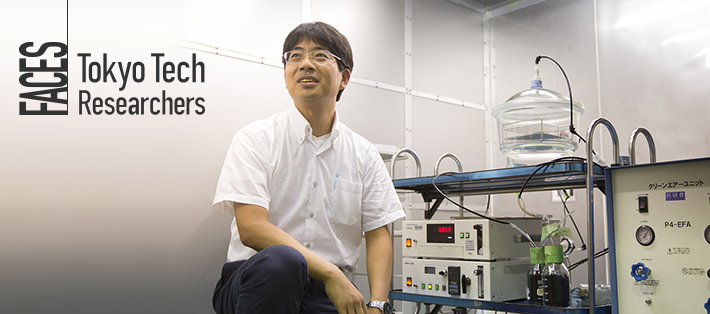
Issue 28
Associate ProfessorNaoki Kagi
Department of Architecture and Building Engineering, School of Environment and Society
"Airtightness in houses and buildings in Japan has greatly improved, contributing significantly to energy efficiency. However, excessive energy-saving measures may cause unintended damage to our health, and it is therefore important for us to consider multilateral viewpoints to maintain a healthy lifestyle," explains Naoki Kagi, associate professor at the Department of Architecture and Building Engineering.
There are five factors that influence the indoor environment — sound, heat, air, water, and light. Kagi focuses on air. He continues, "There are a wide range of invisible contaminants in the air and we simply inhale them involuntarily. I am trying to visualize these contaminants by detecting them, measuring their concentration, and identifying their properties and sources so that I can propose measures to counteract them."
New indoor environmental contaminants
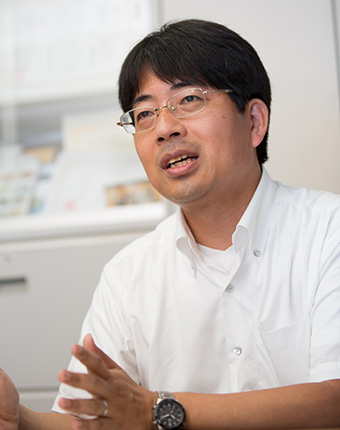
Before the use of air conditioning systems spread in Japan some decades ago, homes and buildings were ventilated by opening windows in summer. However, during and after a period of rapid economic growth, air pollution and heat-island phenomena gradually increased, as did the use of air conditioning. Energy-saving measures were also promoted at this time. As a result, the energy efficiency of air conditioners improved, and buildings were equipped with increased heat insulation and airtightness. Natural ventilation in buildings decreased. In addition, natural interior materials for floors, walls, and ceilings were replaced with artificial substances such as plastics, which contained a variety of chemicals. The low ventilation and high indoor emission of contaminants resulted in new health issues such as sick building syndrome (SBS) and sick house syndrome (SHS).
SBS and SHS are medical conditions where people experience runny nose, fatigue, dizziness, and general malaise caused by chemicals used to produce construction materials for newly built houses and buildings. When these symptoms first began to appear, the causes were unknown. However, studies gradually revealed that they were caused by high concentrations of volatile organic compounds (VOCs)1 generated by formaldehyde and toluene in paints and adhesives used in building construction and the manufacture of furniture, as well as anti-termite agents.
The national government acted by initiating certain measures such as specifying guidelines on allowable indoor concentrations of VOCs. In 2002, the Act on the Maintenance of Sanitation in Buildings set the standard value for formaldehyde used in buildings, and the revision of the Building Standards Act in 2003 obligated the installation of ventilation equipment and limited the use of anti-termite agents and building materials that emit formaldehyde.
"Many people believe that SHS and related issues have now been resolved. However, I don't think they have been addressed sufficiently. Despite improvements in building materials and ventilation systems, the excessive use of housekeeping supplies such as room fragrances and deodorizers, the misuse of air cleaners and humidifiers, and the increase in damage caused by flooding are just a few factors that raise concerns about new and increased indoor environmental contaminants. In addition, we continue to discover new contaminants due to significant improvements in the quality of measurement devices," Kagi says.
Dealing with new chemical substances such as PM2.5 and SVOCs
Classification of volatile organic compounds
"Ultrafine particles such as PM2.5 are usually brought in with the outdoor air, but can also be generated inside buildings through cooking, candles, aroma diffusers, hair sprays, hairdryers, cigarette smoke, copy machines, and laser printers. It has also been confirmed that chemical substances emitted from room fragrances and deodorants react with ozone in the air to form secondary particles. The increasing popularity of wooden houses in Japan has generated other issues. The aroma of natural woods such as the Japanese cypress is believed to have a relaxing effect. However, the source of the aroma, limonene, which is a terpene, reacts with ozone in the air to form secondary particles," Kagi explains.
Unfortunately, there are few studies on the impact of ultrafine particles and secondary particles on human health, and many details have yet to be clarified. "Although they are not of the utmost concern, we need to get the necessary information. I want to clarify the state of these particles in the indoor environment from a scientific viewpoint," Kagi adds.
SVOCs used as plasticizers for plastic have low volatility. Until recently, they were thought to exist at very low concentrations in indoor air, therefore having a negligible influence on the environment. The latest studies, however, suggest that various SVOCs detected in adsorbed house dust are associated with the onset of infantile asthma. It is therefore important to consider the relationship between gaseous SVOCs and dust in the indoor environment when examining the complex behaviors of contamination.
"There is a substance, 2-Ethyl-1-hexanol, that has not yet been specified by any regulations. Di (2-ethylhexyl) phthalate (DEHP) is added as plasticizer (SVOC) to soften ingredients while manufacturing vinyl chloride products. When vinyl chloride products are attached to concrete, the water contained in the concrete hydrolyzes DEHP and generates a large amount of 2-Ethyl-1-hexanol," says Kagi.
In recent years, concrete and other materials have absorbed large amounts of water due to severe rainstorms that have occurred throughout Japan. Because the concrete has not had adequate time to dry between these storms, the emission of 2-Ethyl-1-hexanol may have increased. "The odor is one unpleasant factor, but there is also concern about its effect on human health. I am paying close attention to this," Kagi states.
Severe precipitation has other influences on the indoor environment. Water in itself is not an indoor environmental contaminant, but when concrete and wooden materials remain wet for long periods, mold and bacteria may grow. These can cause allergic reactions and produce MVOCs. Kagi wants to call more public attention to mold and MVOCs.
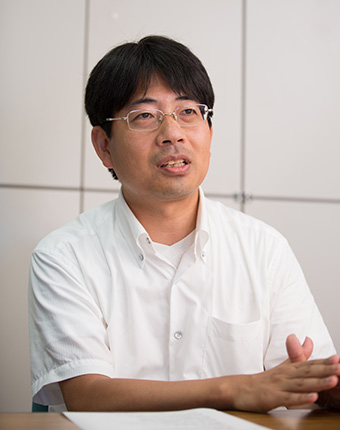
"It is very important for us to manage indoor humidity. The use of humidifiers and hanging laundry indoors can easily raise humidity to levels in excess of 40 to 70 percent, the standard range specified by the government. High humidity, or 'dampness,' is associated with health problems. Humidity in and of itself is not harmful to the air environment, but identifying new indoor air pollution associated with humidity has become one of my major topics of research."
Kagi says that achieving the best indoor air environment requires not only that architectural design be considered more seriously before construction, but also that occupants understand how to reduce the contaminants they emit within the living environment. "Architectural design is a top-down process. It starts from overall design, then descends to structural design, and finally reaches environmental design. This makes it a challenge to consider the indoor environment at the first design stage. To address this situation, architects must deepen their understanding of the environment and building equipment systems, and we as environment and building equipment systems specialists must increase our efforts to educate others about issues related to the indoor environment. Laws and regulations must also be changed, guidelines need to be established, and occupants need to be taught appropriate maintenance of their living environment," says Kagi.
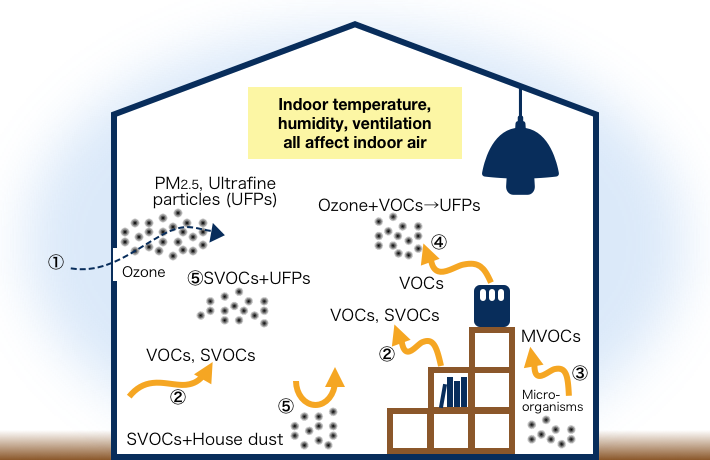
A wide range of indoor contaminants
A wide range of indoor contaminants
1. Contaminants such as PM2.5, ultrafine particles, and ozone also exist in the outdoor air
2. VOCs and SVOCs are generated from materials used in building interiors, furniture, and housekeeping supplies
3. MVOCs are generated from microorganisms
4. VOCs may react with ozone and generate ultrafine particles in the air
5. Although SVOCs have low volatility, they interact with other substances such as house dust and airborne particles
A wide range of other factors including building performance, temperature, humidity, and resident behavior influence indoor air features.
Working on immediate issues while remaining alert to opportunities
Kagi was involved in architectural sanitation and studies on living environments as a researcher at the National Institute of Public Health (NIPH) under the Ministry of Health, Labour and Welfare (MHLW) between 2004 and 2012. His experience during that time had a significant influence on his choosing the indoor air environment as his research topic. MHLW is responsible for the Act on the Maintenance of Sanitation in Buildings, and NIPH conducts supportive research and training. At NIPH, Kagi was assigned to train public health center employees responsible for on-site building inspections. Through this experience, he began to understand that achieving a comfortable indoor environment would require not only proper building maintenance, but also a fundamental review of building planning and design. This understanding prompted him to return to his alma mater, Tokyo Tech, in 2012.
Kagi looks back on his experience at NIPH, "It allowed me to interact with people in a wide range of fields, including healthcare, sanitation, chemical engineering, and analytical chemistry as well as architecture, and this helped me to significantly broaden my perspective."
One of the great advantages of conducting research at Tokyo Tech is the wide variety of equipment available for the study of indoor environmental contaminants. This equipment includes an artificial weather chamber, and analytical and particle measurement devices. Tokyo Tech also provides the environment and professionals required for effective joint research.
"It is very rare for architectural departments at universities to have such a wide range of experimental equipment. We often conduct joint field surveys, experiments, and analyses with other universities and institutions. The significant improvement in analyzers and measurement devices has also helped to increase awareness of environmental contaminants. My research focuses on the measurement of environmental contaminants and the clarification of indoor phenomena. While health effect study is not my specialty, I continue to work with researchers in various fields to clarify environmental issues that affect health, and to provide accurate information and create proposals for solutions. My goal is to contribute to the reduction of health problems associated with the indoor environment from the viewpoint of architectural environmental engineering."
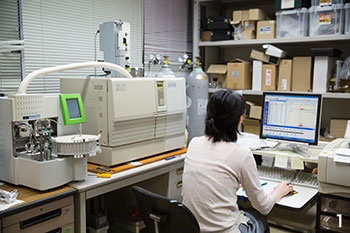
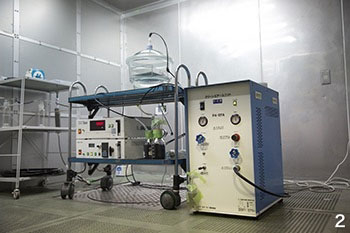
1. Collecting indoor air and inserting it into a gas chromatography-mass spectrometry (GC-MS) device through pre-treatment equipment enables qualitative and quantitative analysis on small amount of VOCs from field surveys and experiments.
2. Interior materials are placed in the transparent glass container and exposed to ozone to detect and clarify chemical substances. The artificial weather chamber can maintain a clean air environment while controlling temperature and humidity levels.
Looking back at his achievements so far, Kagi leaves students and emerging researchers with a message, "When I entered the Department of Architecture and Building Engineering at Tokyo Tech, I never thought I would end up analyzing chemical substances. However, now I believe that this is my mission, and I feel satisfied at the tangible achievements I have accumulated. We can't predict when chances will present themselves to us. Therefore, we always need to work on solving immediate problems while keeping our eyes open for new opportunities. I encourage students to follow their interests, knowing that this will lead to success and satisfaction as researchers."
1 Volatile organic compounds (VOCs)
VOCs are organic compounds that easily volatilize (evaporate) in air at ordinary temperature and pressure. VOCs are often found in solvents, adhesives, and interior materials used in buildings. When they emit from interior materials into the indoor air, airborne VOCs can cause sick building and house syndromes.
2 Particulate matter 2.5 (PM2.5)
PM2.5 is defined as particulate matter measuring 2.5 µm or smaller. Some types of PM2.5 are generated by burning, others are aerosol formations caused by chemical reactions with gaseous contaminants. These fine particles easily enter deep into the lungs and exert an influence on the respiratory and circulatory systems.
3 Semi-volatile organic compounds (SVOCs)
The World Health Organization (WHO) classifies VOCs as those with boiling points from 50 - 100 degrees C to 240 - 260 degrees C, and SVOCs as those with boiling points from 240 - 260 degrees C to 380 - 400 degrees C. Examples of SVOCs include pesticides, insecticides, antimicrobial agents, antibacterial agents, plasticizers, and flame retardants. These are less volatile than VOCs, but are generated over a longer period of time.
4 Microbial volatile organic compounds (MVOCs)
Volatile organic compounds produced in the process of reproduction and metabolism are collectively called microbial volatile organic compounds (MVOCs). MVOCs produced from mold cause musty odors.
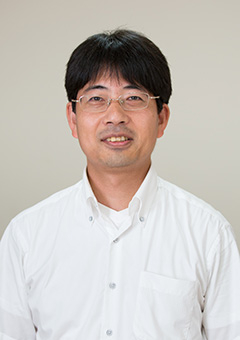
Naoki Kagi
Profile
- 2016Associate Professor, Department of Architecture and Building Engineering, School of Environment and Society, Tokyo Institute of Technology
- 2012Associate Professor, Department of Mechanical and Environmental Informatics, Graduate School of Information Science and Engineering, Tokyo Institute of Technology
- 2011Chief Senior Researcher, Department of Environmental Health, National Institute of Public Health
- 2009Chief, Department of Healthy Building and Housing, National Institute of Public Health
- 2008Chief Researcher, Department of Healthy Building and Housing, National Institute of Public Health
- 2004Researcher, Department of Architectural Hygiene and Housing, National Institute of Public Health
- 2002Assistant Professor, Tokyo Institute of Technology
- 1999JSPS Research Fellow
- 1999Doctor of Engineering, Department of Mechanical and Environmental Informatics, Graduate School of Information Science and Engineering, Tokyo Institute of Technology
- 1994Bachelor of Engineering, Department of Architecture and Building Engineering, School of Engineering, Tokyo Institute of Technology
The Special Topics component of the Tokyo Tech Website shines a spotlight on recent developments in research and education, achievements of its community members, and special events and news from the Institute.
Past features can be viewed in the Special Topics Gallery.
. Any information published on this site will be valid in relation to Science Tokyo.












